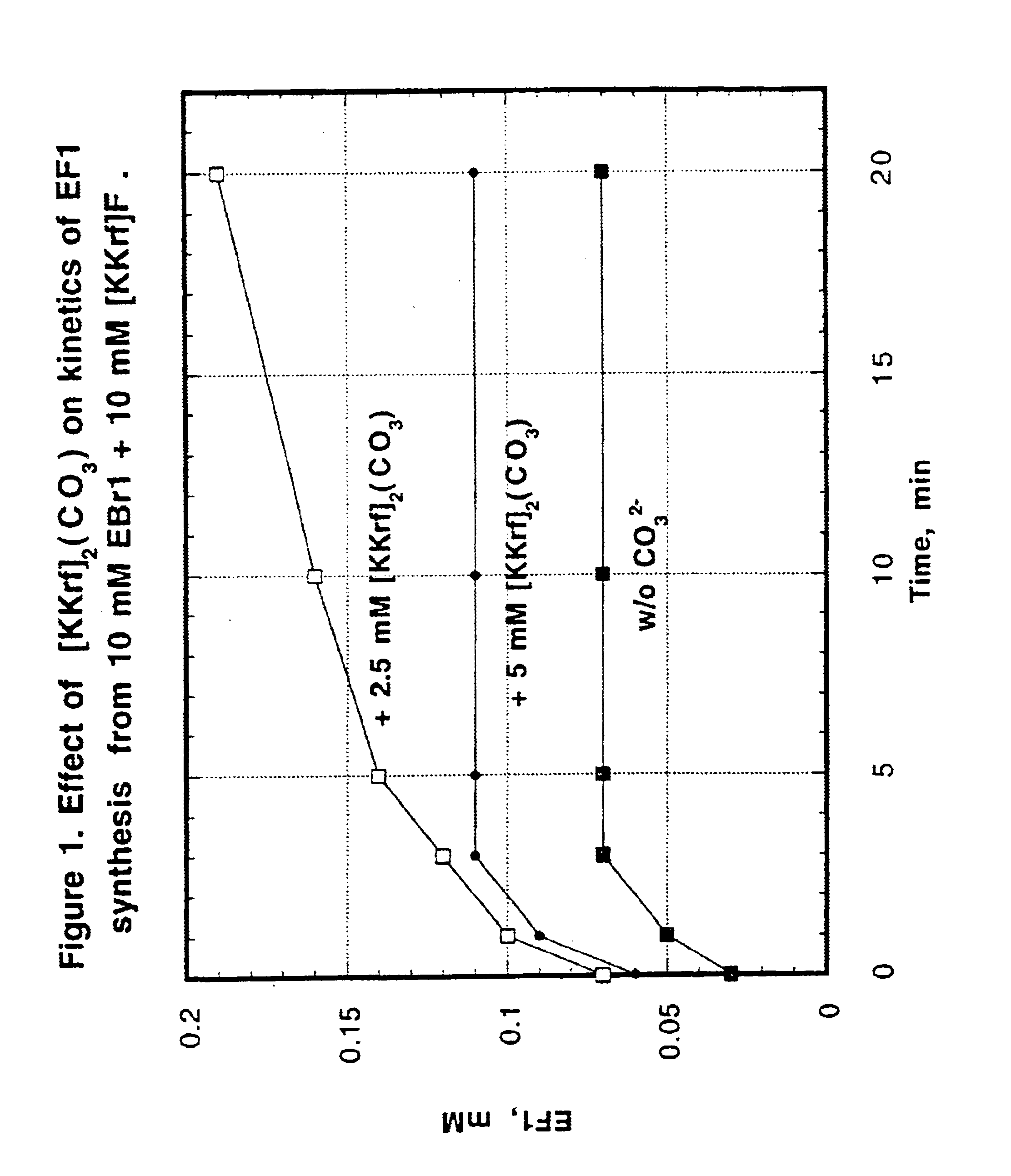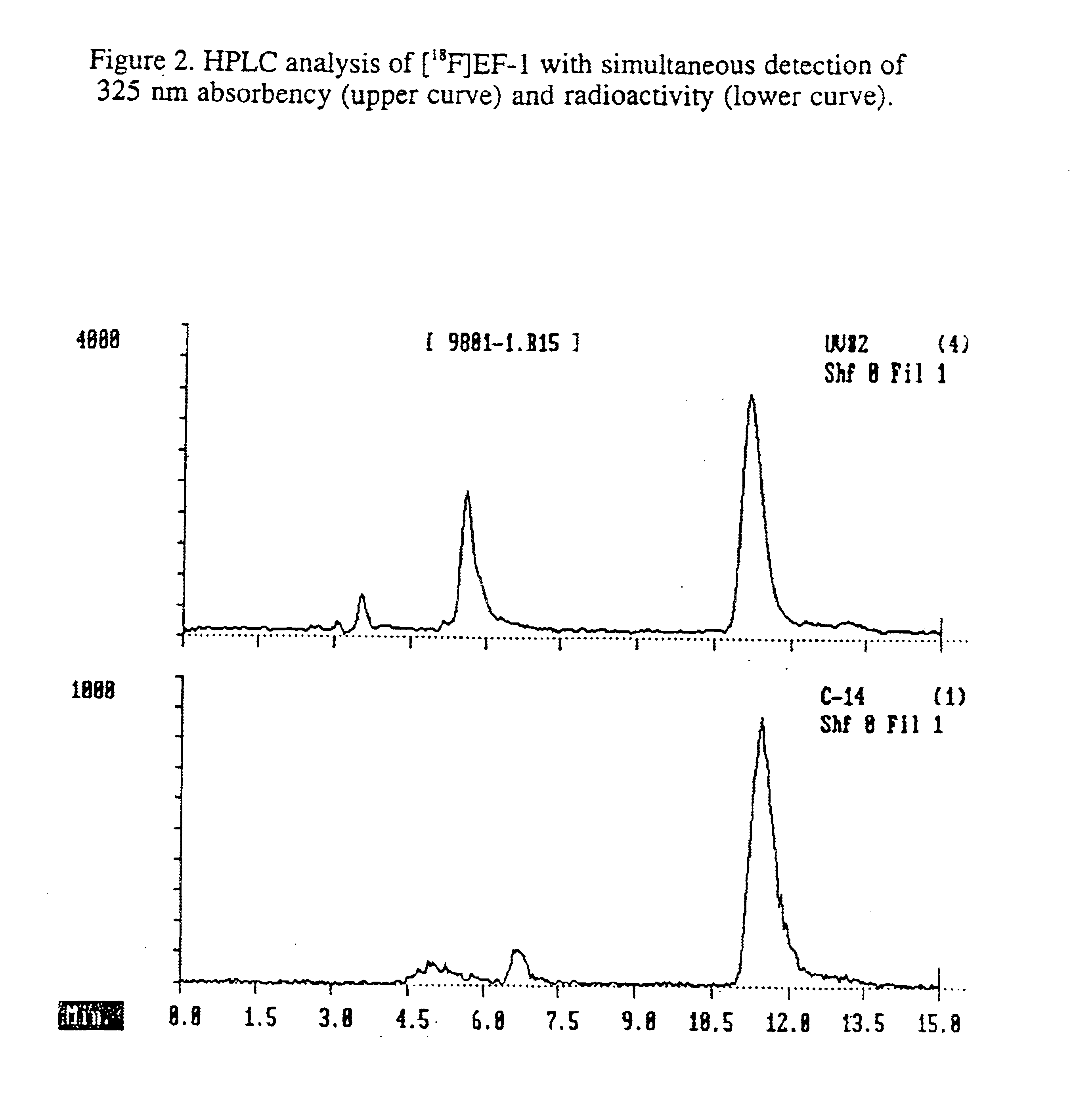Detection of hypoxia
a technology of hypoxia and detection method, applied in the field of nitroaromatic compounds, can solve the problems of affecting the effectiveness of radiation therapy, chemotherapeutic drugs may never reach the hypoxic cells, and the tissue often outgrows its oxygen and nutrient supply, and achieves the effect of detecting oxygen levels
- Summary
- Abstract
- Description
- Claims
- Application Information
AI Technical Summary
Benefits of technology
Problems solved by technology
Method used
Image
Examples
example 1
Synthesis of 2,2,3,3-pentafluoropropylamine (for Making EF5)
Obtained commercially (PCR, Inc., P.O. Box 1466, Gainesille, Fla. 32602)
example 2
Synthesis of 3-bromo-2,2,3,3-tetrafluoropropylamine
3-bromo-2,2,3,3-tetrafluoropropylamine was prepared through the intermediate of 4-bromo-4,4,3,3-tetrafluorobutanoic acid (from literature: Wei Yuan, R, Long, L., and Yuan-Fa, Z, Chinese J. Chemistry 1990, 3, 281). The reactions can be described by the following scheme:
Na2S2O4 / NaHCO3 in CH3CN / H2O BrCF2CF2Br+CH2═CHOEt→BrCF2CF2CH2CHBrOEt CrO3 / H2SO4 in CH3COCH3, NaN3 / H2SO4; HCl→BrCF2CF2CH2COOH→BrCF2CF2NH3Cl
BrCF2CF2COOH (1.2 g, 5 mmol) was dissolved in 3 ml of H2SO4. Sodium azide (0.8 g, 12 mmol) was added in portion to the mixture at 80°. After addition was completed the reaction was continued for 20 hr. The mixture was then cooled to 0°. The solution was diluted with dichloromethane and then sodium carbonate (4 g in 20 ml of water). The organic layer was separated and the water layer was extracted with CH2Cl2 (20 ml×2). The combined dichioromethane was dried over magnesium sulfate overnight and gaseous HCl bubbled into the solution. 0....
example 3
Synthesis of 3,3,3-trifluoropropylamine (for Making EF3)
3,3,3-trifluoropropylamine hydrofluoride can be prepared in one step by treatment of 3-aminopropionic acid with excess SF4 in anhydrous HF at 180° C. The product can be converted to the hydrochloride by subsequent treatment with 40% KOH followed by an excess of HCl.
PUM
| Property | Measurement | Unit |
|---|---|---|
| Capacitance | aaaaa | aaaaa |
Abstract
Description
Claims
Application Information
 Login to View More
Login to View More - R&D
- Intellectual Property
- Life Sciences
- Materials
- Tech Scout
- Unparalleled Data Quality
- Higher Quality Content
- 60% Fewer Hallucinations
Browse by: Latest US Patents, China's latest patents, Technical Efficacy Thesaurus, Application Domain, Technology Topic, Popular Technical Reports.
© 2025 PatSnap. All rights reserved.Legal|Privacy policy|Modern Slavery Act Transparency Statement|Sitemap|About US| Contact US: help@patsnap.com



